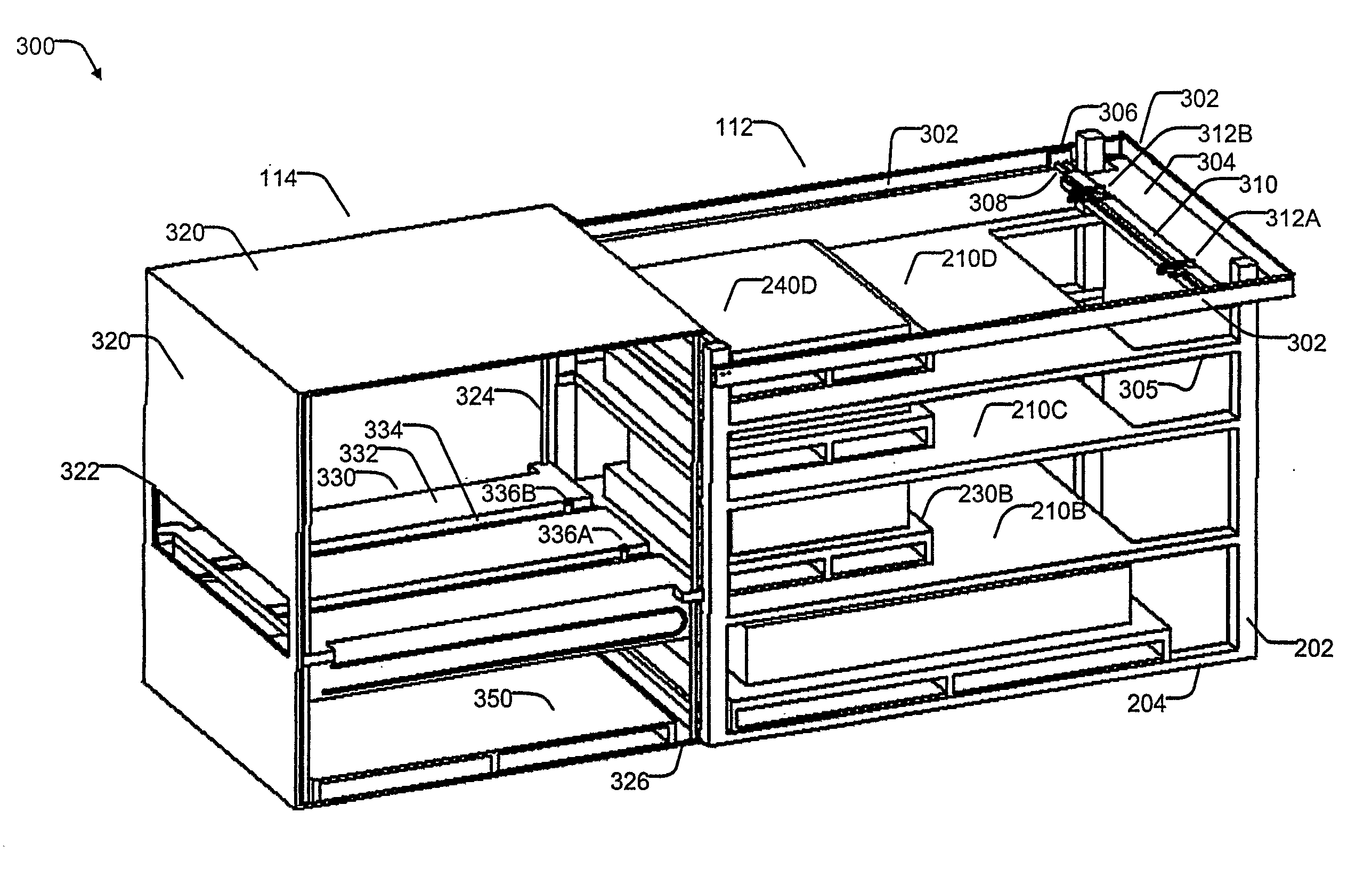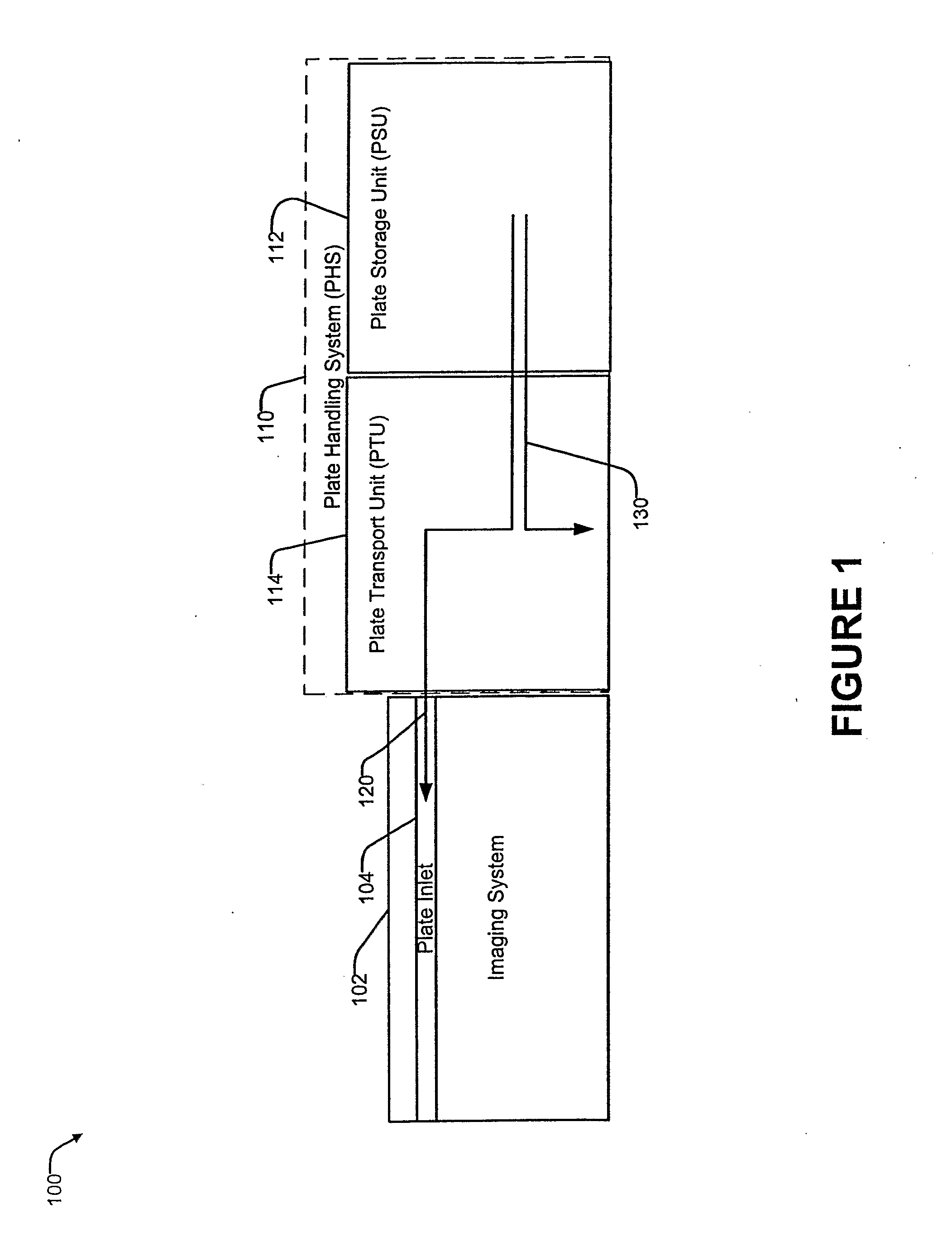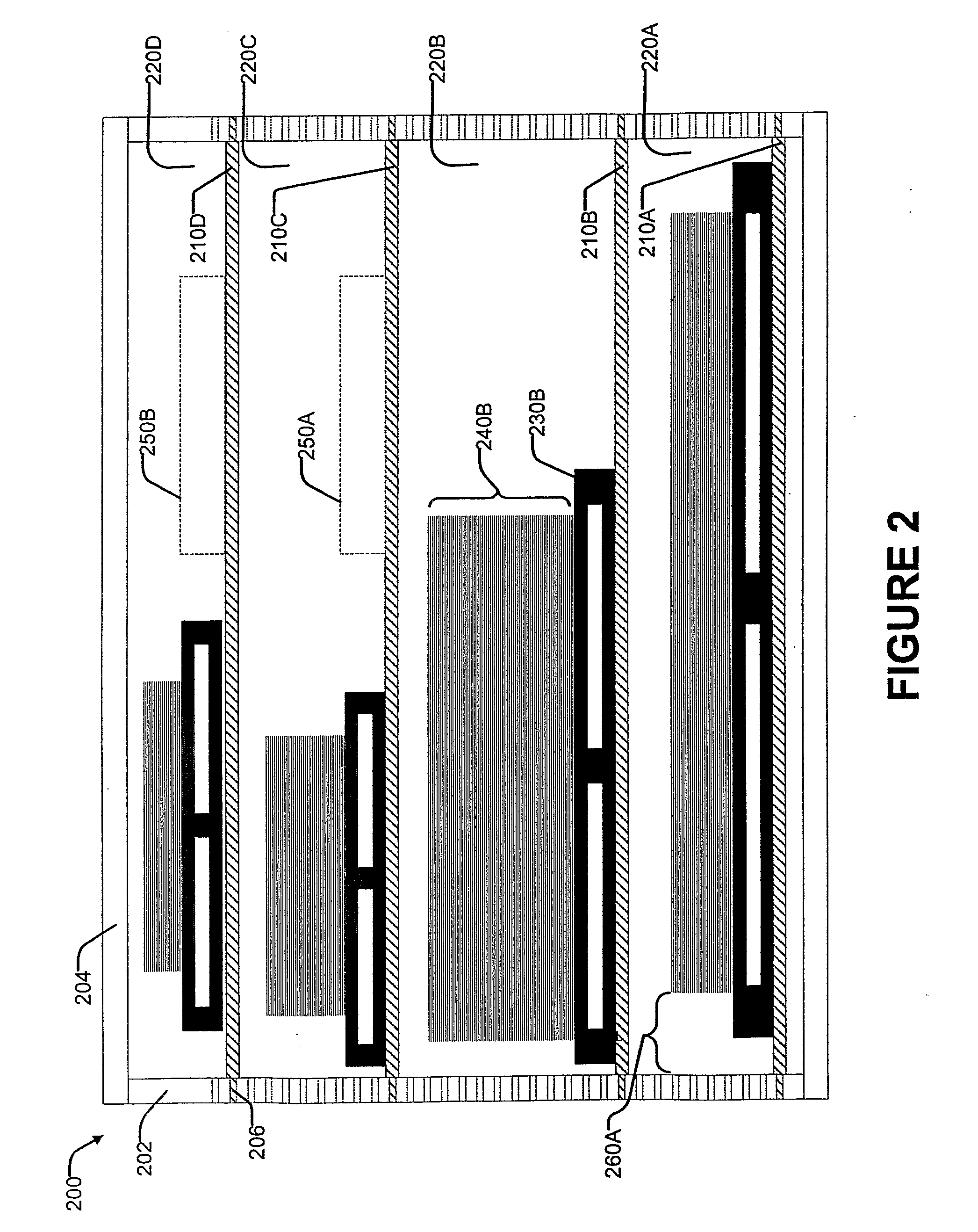Plate handling system
a plate handling and plate technology, applied in the field of plates imaging systems, can solve the problems of reducing reliability, reducing reliability, and difficult loading of large plates into imaging systems' integrated storage facilities, so as to improve reliability, minimize storage requirements, and facilitate loading into the plate handling system
- Summary
- Abstract
- Description
- Claims
- Application Information
AI Technical Summary
Benefits of technology
Problems solved by technology
Method used
Image
Examples
Embodiment Construction
[0020] Throughout the following description, specific details are set forth in order to provide a more thorough understanding of the invention. However, the invention can be practiced without these particulars. In other instances, well known elements have not been shown or described in detail to avoid unnecessarily obscuring the invention. Accordingly, the specification and drawings are to be regarded in an illustrative, rather than restrictive sense.
[0021]FIG. 1 depicts a plate handling system (PHS) 110 connected with an imaging system (IS) 102. PHS 110 is configured to: [0022] store a quantity of plates of various sizes, organized in stacks of varying quantities wherein each stack is comprised of plates of the same size; [0023] pick a plate of a particular size required by IS 102; [0024] transport a picked plate along a plate path 120 to a plate inlet 104 on IS 102; and [0025] dispose of a protective interleaf slipsheet by transporting it from the top of a plate stack along a sli...
PUM
| Property | Measurement | Unit |
|---|---|---|
| weight | aaaaa | aaaaa |
| size | aaaaa | aaaaa |
| size | aaaaa | aaaaa |
Abstract
Description
Claims
Application Information
 Login to View More
Login to View More - R&D
- Intellectual Property
- Life Sciences
- Materials
- Tech Scout
- Unparalleled Data Quality
- Higher Quality Content
- 60% Fewer Hallucinations
Browse by: Latest US Patents, China's latest patents, Technical Efficacy Thesaurus, Application Domain, Technology Topic, Popular Technical Reports.
© 2025 PatSnap. All rights reserved.Legal|Privacy policy|Modern Slavery Act Transparency Statement|Sitemap|About US| Contact US: help@patsnap.com



